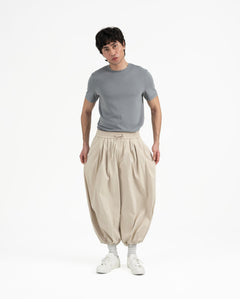At GRAYE, we prefer to use natural fabrics for our garments, due to its smaller environmental impact and are made from renewable resources. At the same time, we believe that extending a garment’s life would help reduce consumption and wastage, and promote a more responsible lifestyle. To prolong your new garment’s life, GRAYE is happy to share tips on how to care for your clothes, and some energy saving steps to reduce our carbon footprints.
- • Cotton • Linen • Tencel • Cupro • Pima Cotton • Cotton Poly Blend • Cotton Nylon Blend

• GARMENT SORTING •
Many tend to neglect this step, as it can get troublesome and time-consuming. Laundry day can already be exhausting in itself, so why bother? When sorting out your garments between light and dark, you are actually preventing colours from transferring or getting torn by others that have trimmings with sharp features (metal zips, hooks, etc).
Another tip to note: coloured garments are strongly advised to wash at lower temperatures to avoid colours from fading. You can even sometimes delay laundry day, as certain clothes (such as outerwear and pants) are recommended to be worn a few times before going in the wash, as they generally wear out faster when washed frequently. • WASHING •
• WASHING •
Washing is the next step, and an important one as well. Nearly all our garments are machine washable.
- We recommend loading the drum 3/4 full to reduce the number of loads - this will help save water, energy and money.
- Using a more efficient washing machine would help save up to 30,000 litres of water per year - try researching on different options before purchasing.
- Choosing a more eco-friendly detergent would exclude chemicals that are harmful to you, your clothes and the aquatic ecosystems.
- Dry-cleaning: avoid conventional dry-cleaning as they often use harmful chemicals - be wary of the dry cleaners you use, and ensure that the chemicals they use will not damage the fibres in your garments.

• WATER TEMPERATURE •
Let’s face it, we end up washing most of our garments together. Therefore, washing in cold water (20°C) is your safest bet in preventing accidental shrinkage, colours transferring or fading. Besides, you’ll be saving 90% of the energy as well by just choosing cold water.
However, there are a few beneficial reasons you would opt for higher temperatures. For one, it is helpful in deodorising and disinfecting, leaving your clothes a bit more clean and fresh. In this case, washing with warm water (40°C) is generally still acceptable for washing most garments. • DRYING •
• DRYING •
On our end, GRAYE is constantly ensuring that garments are pre-shrunk during manufacturing to prevent any further shrinkage. However, it is still crucial to take precautions when caring for your garments.
- Tumble dry - most washing machine cycles comes with a non-heat tumble dry setting, suitable for most garments.
- Dryer - Cotton and linen fabrics are better to dry on low heat, as the wrinkles are harder to iron out when it dries. However, it is best to avoid using dryer when possible, as it uses a lot of energy and damage your clothes’ fibres over time.

• IRONING •
When it comes down to ironing, dampening the garment beforehand will help soften its fibres and make ironing wrinkles a whole lot easier. We suggest ironing at a low heat, which should be enough for many lightweight fabrics.
Here are some ironing tips we have based on the different fibres:
- Fibres such as Cupro and Tencel are best ironed from inside with low heat (<110°C).
- Medium heat can be used for many poly cotton blend fabrics.
- Cotton and linen fabrics can withstand ironing with high heat. When ironing with high heat, it is recommended to have a piece of pressing cloth between the iron and garment to prevent creating a shine on the fabric while ironing. It can also prevent your clothes from damaging from the direct impact of the high heat.




